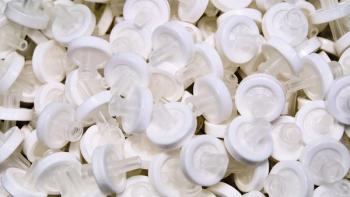
- BioPharm International-08-02-2013
- Volume 2013 Sponsored Supplement
- Issue 1
A Renaissance in Biomanufacturing: The Art of Purification
The industry needs to embrace innovation to improve the efficiency and robustness of biopharmaceutical purification without driving up the cost of goods.
The Renaissance sculptor Michelangelo described his work by taking blocks of marble and freeing a form already contained within by removing all that did not belong in the masterpiece. The same principles apply in downstream processing, where holistic concepts are used to remove everything that does not belong in the drug substance, and it helps to reframe this task by focusing on the contaminants rather than the product.
The Renaissance was a time of great innovation in Europe, a time when new ideas spread and took hold, and accepted paradigms were challenged. In the biomanufacturing industry, innovation is required. We need to adapt to a changing commercial environment shaped by diverse forces including the demands of the market, which try to drive down costs; the emergence of new industry players, particularly those seeking to profit from generics; and, of course, the regulatory authorities, which apply ever more stringent quality requirements to ensure patient safety. As the pincers close around us, we need to innovate to move forward, to take advantage of new technologies, processes, and strategies. We need to negotiate the changing landscape of our industry by thinking smarter and using new ideas to create new opportunities.
In seeking ways to improve our fortune, it is tempting to reach for the low-hanging fruit and thus make small and incremental improvements to our processes. But most of the easy pickings are already gone. We must look further than before and shine the light of change into every corner of biomanufacturing, no matter how well established and safe we feel the paradigms may be. Perhaps the best example to illustrate this change is polishing, the final phase of downstream processing, which is essential to remove impurities, and contaminants, and especially for the clearance of pathogenic agents such as endogenous and adventitious viruses.
The
Art
of Purification
Today, technology platforms are implemented early on in process development, and at least two orthogonal steps are assigned for the robust and efficient clearance of impurities and contaminants, ensuring that manufacturing processes meet the specifications established during validation. We need to harness the power of innovation to improve the efficiency and robustness of polishing without driving up the cost of goods.
Recent innovations in polishing that have started to address these goals include the use of membrane chromatography that can target all critical contaminants under a wide range of process conditions, but boost productivity at the same time; and the development of novel dead-end filters with tapered pores to increase virus retention without blocking. These developments come with new, integrated and (if appropriate) single-use concepts that meet the requirements of modern process trains.
This special supplement of BioPharm International collects together a number of ground-breaking articles by authors at the cutting edge of downstream processing, focusing on polishing and virus removal. The supplement begins with a report by Nathalie Frau et al. on the development of a new scale-down device for polishing and virus removal. This is complemented by an article by Min Lin and colleagues describing the development of a salt-tolerant membrane adsorber that can be used for polishing during the production of complex proteins in high-conductivity feed streams. Another report by Yun (Kenneth) Kang and colleagues outlines a novel approach to antibody polishing involving a combination of high-throughput screening and design of experiments optimization to establish a salt-tolerant interaction chromatography step for the efficient clearance of impurities from four antibodies under high-conductivity conditions. The final article by Thom et al. highlights the exciting development of a new high-throughput parvovirus-retentive membrane with an optional adsorptive pre-filter as an integrated concept. These research articles are followed by a broader outlook discussing the future of downstream processing to demonstrate the need for continuous innovation in an industry that is running to stand still. The supplement closes with a short interview about the options of single-use technology in protein purification.
Fortune favors the brave, and thus to ensure future progress, we need to prepare courageously for a commercial environment where change and adaptation is a way of life. We need to strive to be better, but also to be smarter. Like the Renaissance masters that came before, we must not resist this season of change but instead we must embrace it!
Articles in this issue
over 12 years ago
The Future of Downstream Processing-2013over 12 years ago
Protein Purification Using Single-Use TechnologyNewsletter
Stay at the forefront of biopharmaceutical innovation—subscribe to BioPharm International for expert insights on drug development, manufacturing, compliance, and more.





